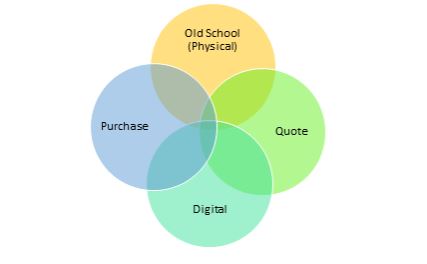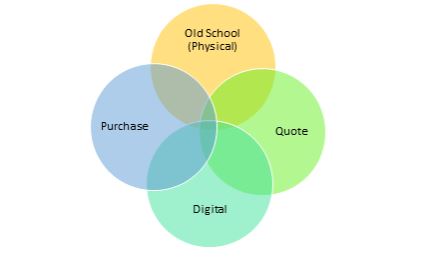Every month, my grandson gets a toy for a reward for completing his homework and good behavior. We would go to one of the big box stores and he would spend an hour perusing the toy section before finding that one toy. He is especially fond of a toy called a Beyblade which is a type of spinning top that can explode when battled against other Beyblades. The stock of Beyblades at the big box store ebbed and flowed. Sometimes there were two rows to choose from and sometimes there were just a few. It was always hit and miss, sometimes we found what we were looking for and sometimes we left disappointed. As time went on and he became older, and more familiar with the type of toy he was looking for we often found that we had to go online to find what he was looking for.
Then, as we all know, the world changed. We were all quarantined for months on end because of the COVID-19 pandemic. We didn’t go to the store to shop for toys anymore. But my grandson still wanted his reward. We started shopping for his toy exclusively on-line. As we did this, we found that not only was the selection of toys much greater, but we could shop for almost anything online. We are no longer confined to what the retailer thinks will sell, we can find exactly what we want with just a few mouse clicks and some scrolling.
While this transition to on-line shopping has been going on for the past twenty years, what has happened this past year with Covid-19 has accelerated the transition to e-commerce, not just for Business to Consumers (B2C), but also for Business to Business (B2B). This pandemic forced people to be stuck at home for extended periods of time. When they were working from home they shopped from home as well. Sometimes the only option they had was to get things via e-commerce. This is where more people in their home life discovered meal delivery services, online options for grocery shopping, shopping for Christmas all online. Customers also discovered that online – they can search for a very broad selection of products and see a greater depth of the product offering.
What does this mean for B2B transactions?
What started out as a business to consumer market has now become a Business to Business B2B market. Buyers are now more willing to browse and purchase online for a broader range of goods and services than before. They can see what the best value and selection is for their limited resources, without having to wait for vendors to return their repeated requests for quotes.
The buyers love that they can see the entire breadth and depth of what is available, vs. what the store is able to put on the showroom floor. The caveat to this is if the inventory isn’t available online, buyers might think that the sellers don’t have it and might not reach out to sellers via the old school methods of sending sellers quotes.
Mark Brohan reported in digitalcommerce360.com that the gross merchandise volume on all U.S. B2B marketplaces will grow by 37% in 2020 to 31.2 Billion. That is a huge change in buyer’s behavior. The overall message is that customers were willing to only interact in the old school way of buying through physical channels of phone and emails is now shifting to online.
This doesn’t mean that people are entirely shifting to e-commerce, they are shifting between those worlds. Honeywell commented in Forbes:
“… the line between digital and physical retail has blurred. Shoppers who once preferred brick-and-mortar stores now find themselves shopping online more often, and vice-versa. As each step into a new channel, they keep one foot planted firmly in the old one, shifting their weight back and forth from one purchase to the next. The result is a mélange of consumer expectations wherein shoppers demand both the convenience and transparency of ecommerce and the service and immediacy of physical retail — no matter where they shop.”
Takeaway
The Covid-19 pandemic has greatly impacted purchasing behaviors in both the business to consumer market and business to business markets. The COVID-19 pandemic has forced more consumers to make their purchases on-line. Purchasing behaviors are moving online.



